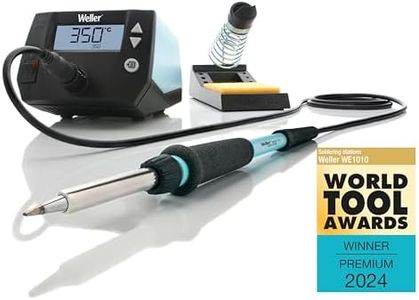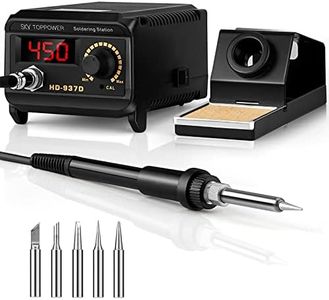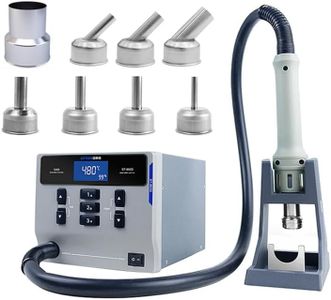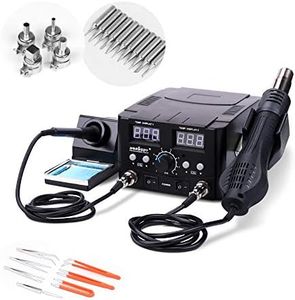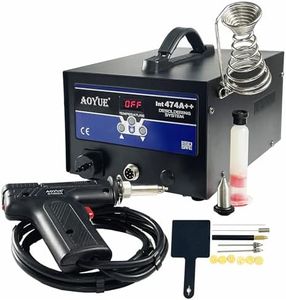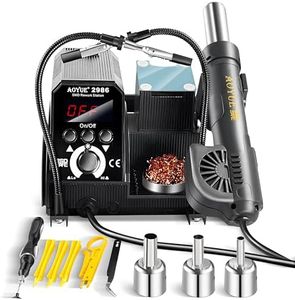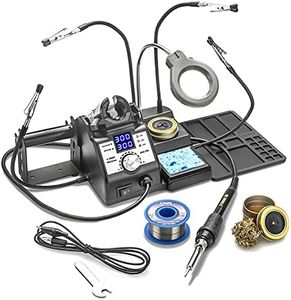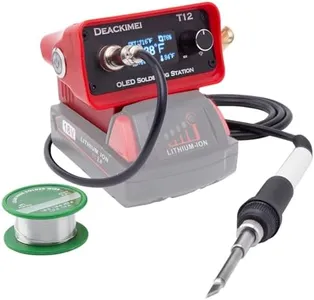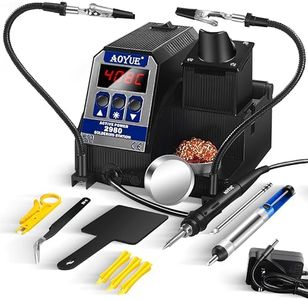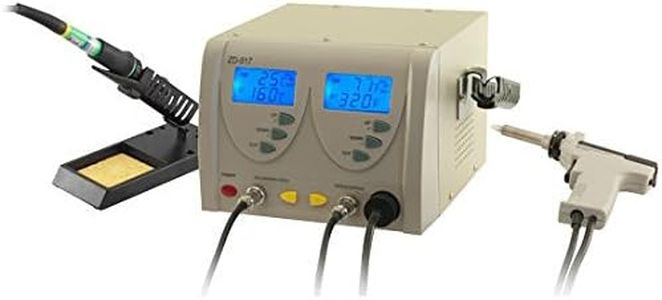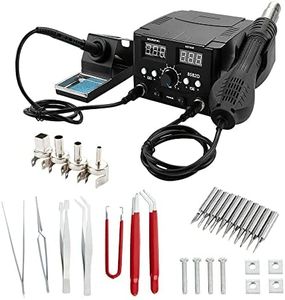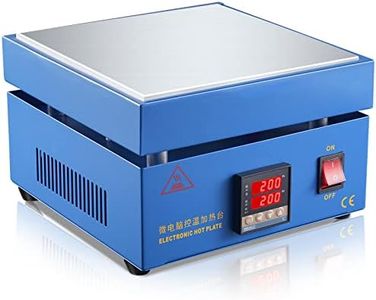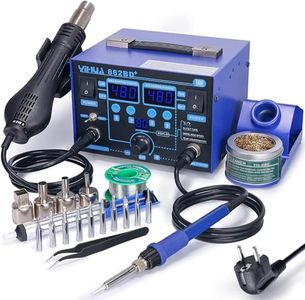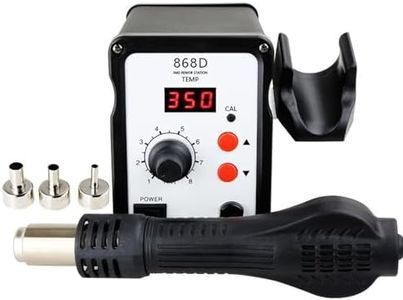We Use CookiesWe use cookies to enhance the security, performance,
functionality and for analytical and promotional activities. By continuing to browse this site you
are agreeing to our privacy policy
10 Best Soldering Stations
From leading brands and best sellers available on the web.By clicking on a link to a third party's website, log data is shared with that third party.
Buying Guide for the Best Soldering Stations
Choosing the right soldering station is essential for anyone interested in electronics, jewelry making, or repairs. A good soldering station helps you work safely and efficiently while delivering precise and reliable results. With so many features and specifications available, it's important to understand your own needs and how different options match up with those needs. Carefully reviewing the main specifications will help you make an informed choice and ensure your projects are both successful and enjoyable.Temperature ControlTemperature control allows you to set and regulate the tip’s heat for specific soldering tasks. This is important because different components and solder types require different temperatures to avoid poor solder joints or damage to sensitive parts. Temperature control can range from simple dials to digital displays with fine adjustment. If you’re doing basic repairs or infrequent projects, a fixed or basic dial might suffice. For regular work, especially with delicate electronics, precise digital control is helpful to maintain consistency and prevent damage.
WattageWattage describes the station’s power and affects how quickly it heats up and how well it maintains temperature during use. Lower wattage stations (around 20-40 watts) are sufficient for small jobs like simple wire soldering, but may struggle with larger joints. Medium wattages (40-60 watts) balance speed and capability for most general electronics work. Higher wattage stations (over 60 watts) are preferred for frequent use, larger projects, or working with heavier components, as they recover temperature faster after each joint.
Tip CompatibilityTip compatibility refers to the range and types of soldering iron tips that fit and work well with the station. This is important because different tasks require different tip shapes and sizes—fine points for detailed electronics or broad tips for heavier wires. Some stations only fit their brand's tips, while others have universal compatibility. If you anticipate a variety of projects, choose a soldering station that offers easy tip replacement and a wide assortment of available tips.
Safety FeaturesSafety features such as auto-shutoff, anti-static protection, and secure stands prevent accidents and protect sensitive components. For occasional DIY projects, basic safety like a sturdy stand may be enough. If you work long hours, handle sensitive electronics, or work in shared spaces, advanced features like auto-shutoff (which turns the iron off when idle) and ESD (electrostatic discharge) protection are highly valuable to ensure both user safety and equipment longevity.
Display Type and ControlsDisplay type can vary from simple indicator lights to digital displays that show the exact temperature. Controls may be basic dials or advanced push-buttons. For beginners, a simple interface is easier and less overwhelming. Hobbyists or professionals benefit from clear digital readouts that show precise temperature and advanced controls for detailed adjustment. Consider how much control and feedback you want—this can help keep your work consistent and avoid mistakes.
Heating Element TypeThe heating element in the soldering iron determines heat-up speed, temperature stability, and durability. Standard wire-wound elements are more affordable and common for casual use. Ceramic heating elements heat faster and maintain temperature more accurately, suitable for frequent or precision work. Think about how often you'll use the station and how critical fast heat-up and stable temperature are for your needs.
